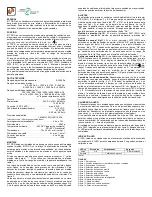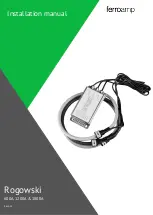
19
an output increase of only about 3dB. The level at which the onset of compression starts is set by the
voltage divider R63 and R108. The compressor output enters the DSP, U2 pin 107 (TX AUDIO) for
processing. The transmit audio data emerges from the DSP and is converted to an analogue signal in DAC
U63, and emerges from pin 12.
Transmit tones
These are the tones which are transmitted for such purposes as SELCALL, and tone for the automatic
antenna tuner. These are generated in the DSP and are summed therein with the speech signals.
Post DSP (Transmit direction)
Serial digital audio from the DSP (U2) fed to an eight channel DAC U63. The output from the DAC TX AUD
(OUT 6) is filtered off with the low pass filter around U7B on the RF audio schematic. U7A and U7B also
act as a phase splitter to feed a balanced mixer U61, an analogue bus switch. The square wave carrier, the
frequency of which depends on the selected side band (normally 453.4kHz or 456.6kHz), is fed to pin 6 of
U61. The double side band suppressed carrier output can be monitored on TP16. Bias for this stage is
supplied by R173.
455 kHz IF processing
The signal from U61 is switched to the 455 kHz crystal filter via TR switch U36B (transmit direction), and the
filter select switches U36A. Resistor R121 on the output of the mixer U61 is to present the filter with its
correct termination impedance. Since the signal level at this point is quite high, the loss in the resistor is not
significant.
Second mixer
The signal, now one side band from the filter, passes through the filter select switch U35C, impedance
matching transformer T1, and the noise gate U40 (switched through), and then to the second mixer U48.
The square wave CMOS level local oscillator LO2 is fed to pin 6 of U48. The second mixer output feeds
the
45MHz filter after passing through TR switches U49 and U50. The two stage 45 MHz crystal filter removes
the unwanted mixer products.
First mixer
The now 45MHz signal is routed via TR switch U54 to amplifier Q6, and from there to the first mixer U47 via
TR switch U53 and closed noise gate U51. The first mixer’s local oscillator is a square wave with a
frequency range of 46.6 to 75 MHz. The mixer converts the 45MHz signal to the required output frequency
from 1.6 to 30 MHz. The output filter consisting of
L15, L14, L41 and associated Capacitors
remove the
unwanted first mixer products, leaving only the selected side band feeding the output connector P8.
Noise blanker
The noise blanker receiver U18 is fed from the first mixer output via FET Q4 which acts as a buffer and
prevents the noise blanker receiver local oscillator generating intermodulation products in the main receiver.
FM superheterodyne chip SA605, U18, is used with wide ceramic filters F6, and F7 to detect impulse noise.
The RSSI output on pin 7 produces narrow noise pulses. These are fed to comparator U30, the thresh hold
of which is set by the microprocessor (BLANKERADJ) on pin 2 of U30. When the noise pulses cross this
threshold and cause the comparator U30 to change state. This results in low going pulses (BLANKER
DETECT) which are synchronous with the noise pulses. These pulses are processed by the
microprocessor U1 to provide best timing and pulse width for optimum noise suppression. The pulses
emerge from the microprocessor on pins 137 for NOISEGATE1 and pin 136 for NOISEGATE2.
Содержание 2000 Series
Страница 10: ...10 ...
Страница 29: ...29 To access components on the battery charger PCB the RF shield must be un soldered ...
Страница 45: ...45 Rear panel connectors ...
















































